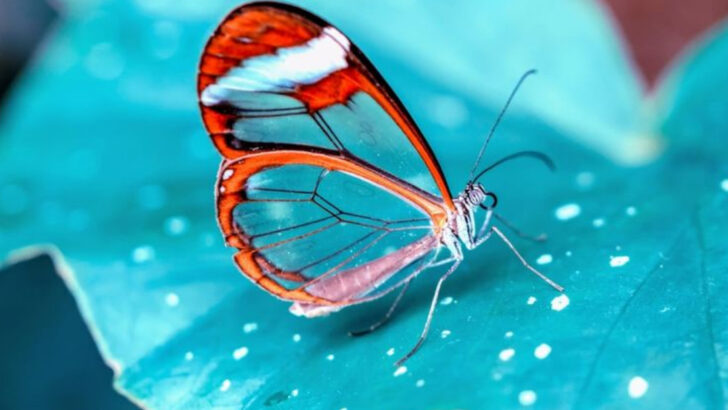Nature didn’t just create life—it went full artist mode. Some animals don’t look real. They look hand-painted, airbrushed, dipped in stardust, or designed by someone with a flair for drama. We’re talking bold colors, dazzling patterns, feathers that shimmer like rainbows, and skins that look photoshopped. These creatures don’t blend in—they steal the spotlight, stop you in your tracks, and make you question if evolution had a favorite brush. Get ready to meet 16 animals so stunning, they make sunsets seem lazy.
Mandarin Fish
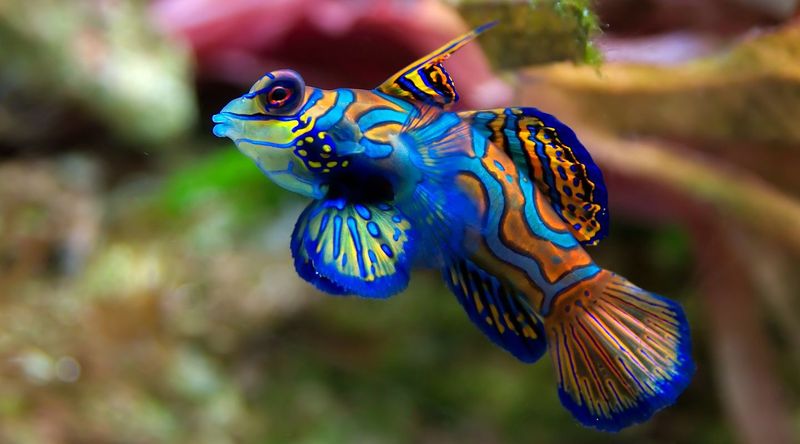
With colors that look straight out of an artist’s palette, the mandarin fish is truly a marvel. Its blue, orange, and green patterns create a mesmerizing display, often leaving observers in awe. Native to the Pacific Ocean, these fish are often found in shallow lagoons and coral reefs. The bold coloration is not just for show; it serves as a warning to predators of the fish’s toxicity.
In the world of marine life, the mandarin fish stands out. Its beauty is matched by its reclusive nature, often hiding among corals and rocks. A true jewel of the sea.
Peacock

The peacock, with its extravagant tail feathers, is a symbol of beauty and grace. When a male peacock fans out its tail, it reveals iridescent blues and greens, covered in eye-like patterns. This display is used during courtship rituals to attract females.
Peacocks are native to South Asia, but their captivating appearance has made them popular in parks and gardens worldwide. Their beauty doesn’t end with their feathers; their calls and dances add to their charisma. It’s no wonder that the peacock has inspired countless artists and cultures.
Scarlet Macaw

The scarlet macaw is a splash of colors in the tropical rainforests of Central and South America. Its vibrant red, yellow, and blue feathers make it one of the most striking parrots in the world. These birds are not just visual spectacles; they are also known for their intelligence and social nature.
In the wild, scarlet macaws are often seen in pairs or small flocks. Their loud calls can be heard echoing through the forest, a reminder of their presence. With their colorful plumage, scarlet macaws are truly the artists of the avian world.
Clownfish
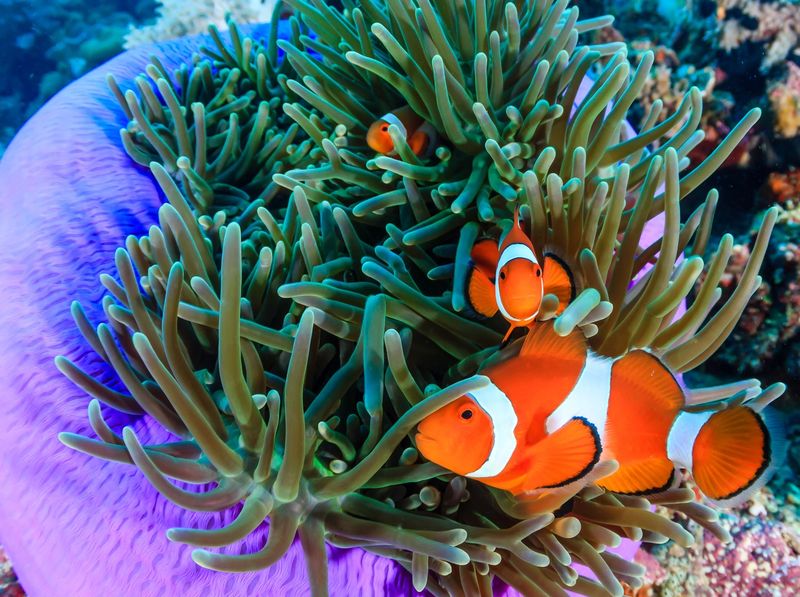
Famous for its role in popular culture, the clownfish is known for its vibrant orange and white stripes. These small fish have a symbiotic relationship with sea anemones, which provide them protection from predators. In return, clownfish help keep the anemones clean.
Clownfish are native to warm waters of the Pacific and Indian Oceans. Their playful demeanor and striking colors make them a favorite among aquarists. The clownfish’s unique relationship with its environment is as fascinating as its appearance, making it a true underwater wonder.
Tiger
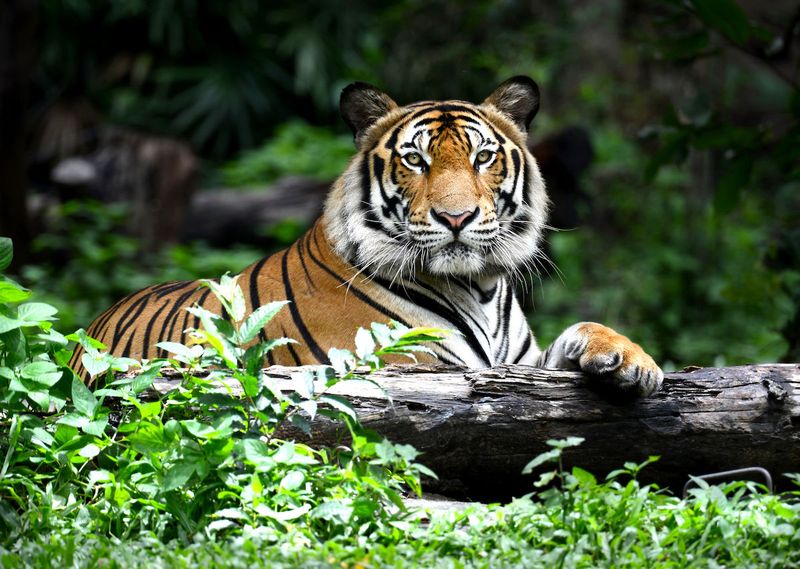
With a coat as bold as its presence, the tiger is a masterpiece of nature’s design. Its striking orange fur with black stripes makes it a fearsome yet beautiful predator. Tigers are solitary hunters, often found in dense forests and grasslands across Asia.
The tiger’s stripes are like fingerprints; no two are alike. This unique pattern helps them blend into their environment, making them formidable hunters. Their beauty and power have made tigers a symbol of strength and courage in various cultures.
Blue Morpho Butterfly
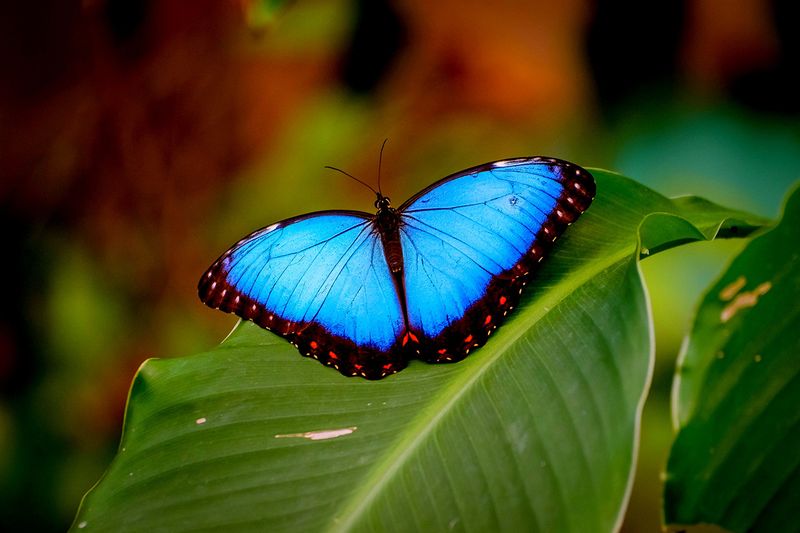
The blue morpho butterfly is a sight to behold in the rainforests of Central and South America. Its wings are a brilliant shade of blue, created by the microscopic scales that reflect light. This iridescence makes it appear almost otherworldly as it flutters through the forest.
While the tops of their wings are vivid blue, the undersides are brown with eyespots, providing camouflage when the butterfly is at rest. The blue morpho’s enchanting flight is a dance of light and color, captivating all who witness it.
Snow Leopard

High in the rugged mountains of Central Asia, the snow leopard prowls with grace and power. Its thick fur coat, patterned with rosettes, provides insulation against the cold and a stunning visual display. Known for their elusive nature, snow leopards are often considered the ghosts of the mountains.
Their long, bushy tails help them balance on rocky terrain while also serving as a blanket in harsh weather. The snow leopard’s beauty is matched by its solitude, making it a symbol of mystery and majesty in the animal kingdom.
Mandrill
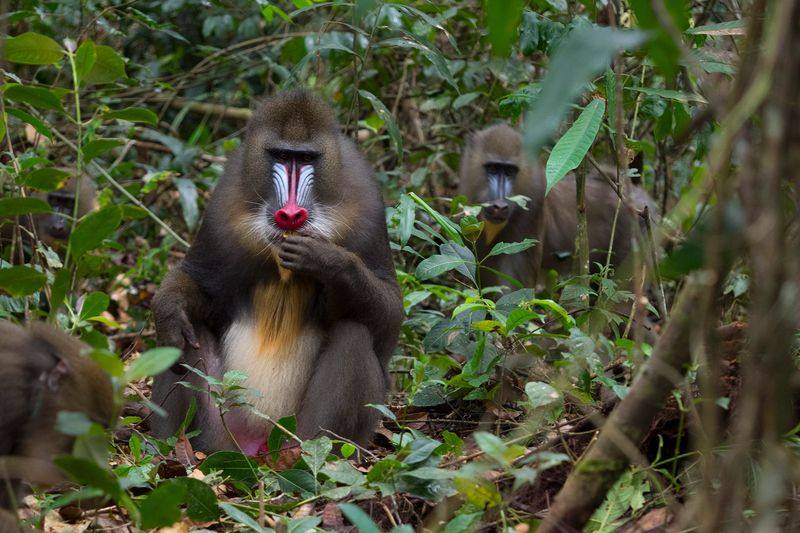
The mandrill, with its vibrant facial colors, is one of the most visually arresting primates. Found in the rainforests of Central Africa, the male mandrill’s red and blue face is a display of dominance. These colors become more pronounced when the mandrill is excited.
Mandrills live in large social groups called troops, led by a dominant male. Their loud vocalizations and expressive faces make them fascinating to observe. The mandrill’s striking appearance and complex social structure make it a true wonder of the primate world.
Lionfish

The lionfish is a stunning marine creature, known for its dramatic appearance and venomous spines. Its red, white, and brown stripes provide an intimidating display, warning potential predators to keep their distance. Lionfish are native to the Indo-Pacific region but have become invasive in other parts of the world.
Despite their beauty, lionfish are voracious predators, often impacting local marine ecosystems. Their elegant yet dangerous presence is a reminder of nature’s complexity and the delicate balance of underwater life.
Flamingo
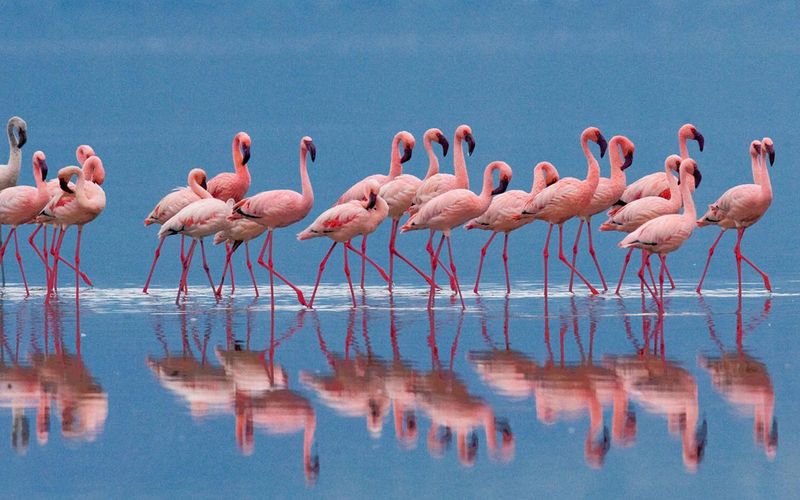
The flamingo, with its long legs and pink feathers, is a symbol of elegance and flamboyance. These birds get their color from the carotenoid pigments in their diet of shrimp and algae. Flamingos are social creatures, often found in large flocks in shallow lakes and lagoons.
Their synchronized movements during feeding and courtship are a spectacle to behold. The flamingo’s unique color and graceful demeanor have made it a beloved icon of beauty and charm in the natural world.
Glasswing Butterfly
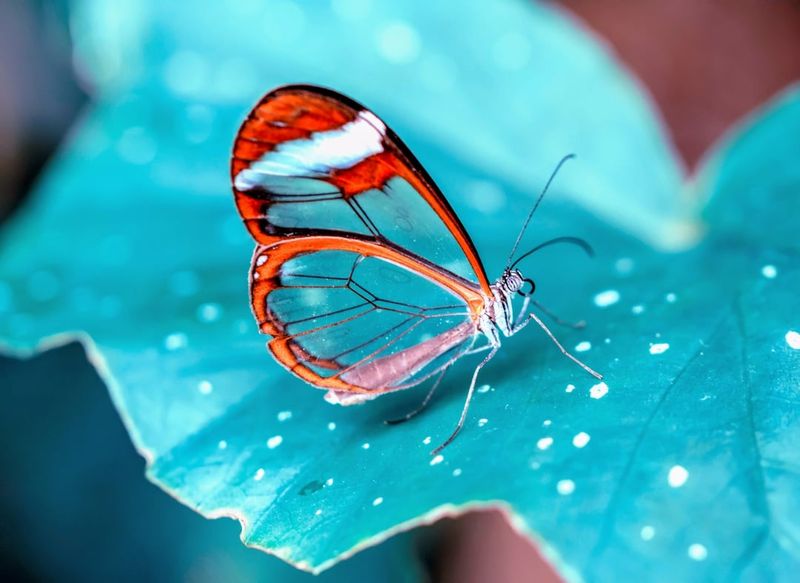
The glasswing butterfly is a delicate marvel of nature, with wings so transparent they seem almost invisible. Found in Central and South America, these butterflies are masters of camouflage, blending seamlessly with their surroundings.
The transparency of their wings is due to the absence of scales, allowing them to evade predators effortlessly. The glasswing butterfly’s ethereal beauty and elusive nature make it a captivating subject for butterfly enthusiasts and nature lovers alike.
Quetzal
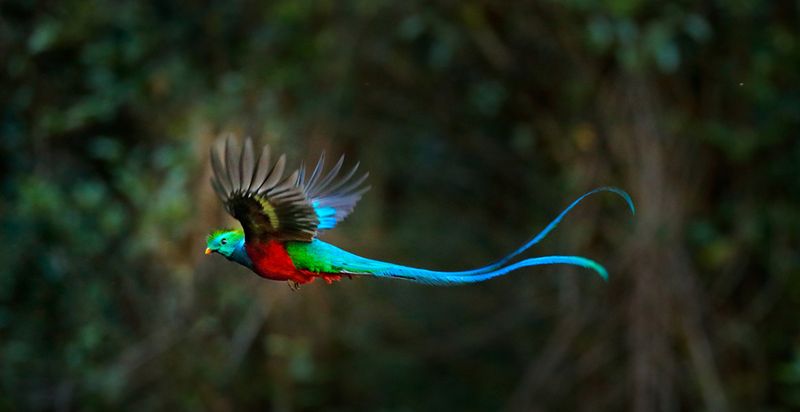
The resplendent quetzal is a bird of legendary beauty, revered in Central American cultures. With its metallic green and red plumage, it was considered sacred by the ancient Maya and Aztec civilizations. The quetzal’s long tail feathers add to its majestic appearance.
These birds are found in the cloud forests of Central America, where they are often seen flitting among the trees. The quetzal’s striking colors and cultural significance make it a symbol of freedom and beauty.
Zebra

The zebra’s black and white stripes are one of nature’s most striking designs. Found in the grasslands and savannas of Africa, these patterns serve as camouflage, confusing predators and protecting the herd.
Each zebra’s stripes are unique, much like human fingerprints. This individuality is celebrated in the zebra’s social behavior, as they live in tight-knit groups, relying on each other for protection. The zebra’s distinctive appearance and social nature make it an icon of the African wilderness.
Leafy Sea Dragon

The leafy sea dragon is an enchanting marine creature, resembling a piece of drifting seaweed more than a fish. Native to the waters off Australia’s southern coast, it uses its leaf-like appendages for camouflage, blending perfectly with the underwater vegetation.
This remarkable disguise helps protect it from predators, making the leafy sea dragon a master of mimicry. Its delicate beauty and unique appearance have made it a favorite among divers and marine biologists.
Axolotl
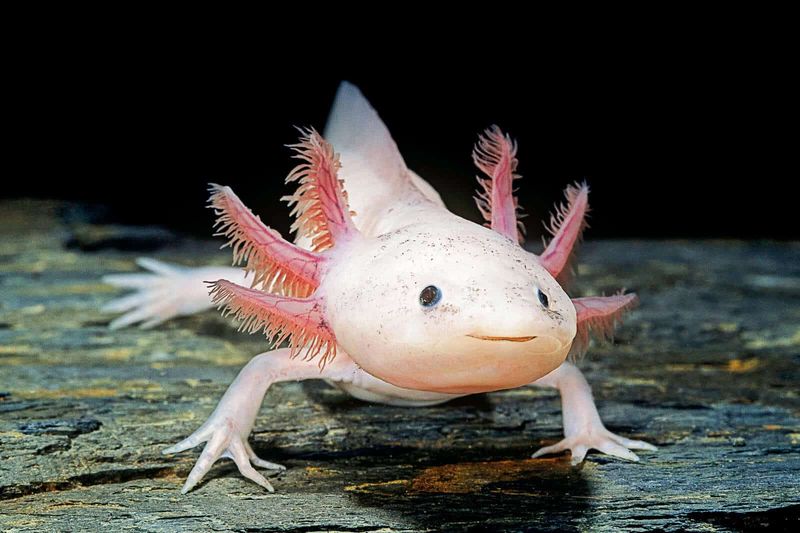
The axolotl, often referred to as the “Mexican walking fish,” is actually a salamander with unique regenerative abilities. Its feathery gills and smiling face give it an endearing appearance. Native to the lakes of Mexico, the axolotl has become a symbol of resilience.
Unlike most amphibians, axolotls retain their larval features throughout their lives, a trait known as neoteny. Their ability to regenerate limbs and organs has made them a subject of scientific study. The axolotl’s quirky charm and survival skills make it a fascination worldwide.
Red Panda

With its russet fur and bushy tail, the red panda is a charming inhabitant of the Himalayan forests. Often overshadowed by its black-and-white namesake, the red panda is equally captivating. It uses its ringed tail for balance and warmth in the cold mountain climate.
The red panda’s diet consists mainly of bamboo, but it occasionally eats fruits and insects. Their playful antics and gentle nature have made them a favorite at zoos and conservation parks. The red panda’s endearing looks and habits make it a true treasure of the animal kingdom.

